The second level has the north entrance to the building as well as an entrance through the Cav Commons café space (housing Saxbys café). The Z Society Reading Room and a Service & Information Desk are in this area as well. The central space on this floor holds the offices, workspaces, and seminar rooms of Rare Book School, and the central hallway contains gallery space. There are two large Study Courts. The east wing contains the McGregor, Lamsam, and Weinstein Rooms. Preservation and conservation spaces are on this floor, as well as a Library classroom and the office of the Bibliographical Society of the University of Virginia.
- Shannon Library second floor map
-
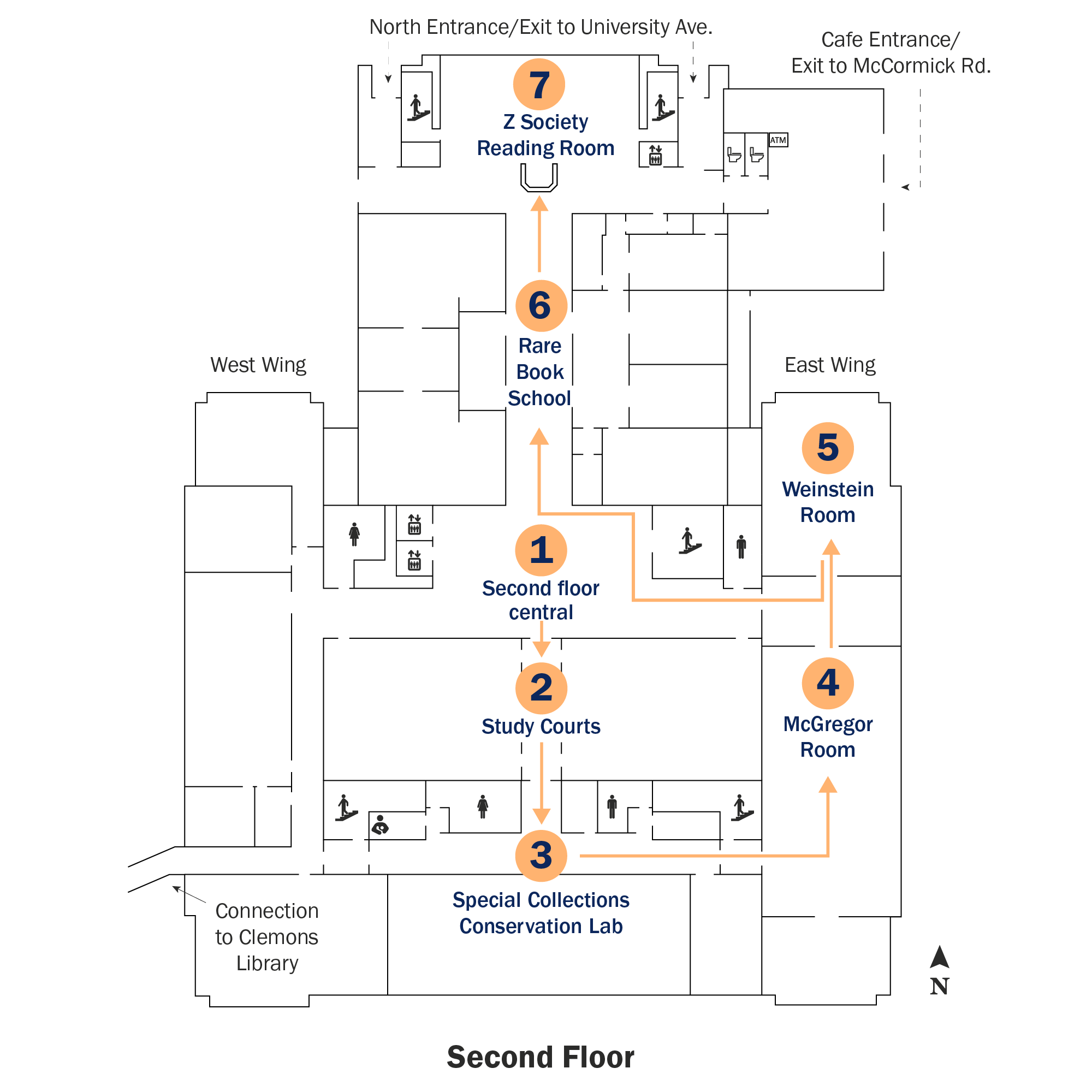
Stop 1: Second floor central area
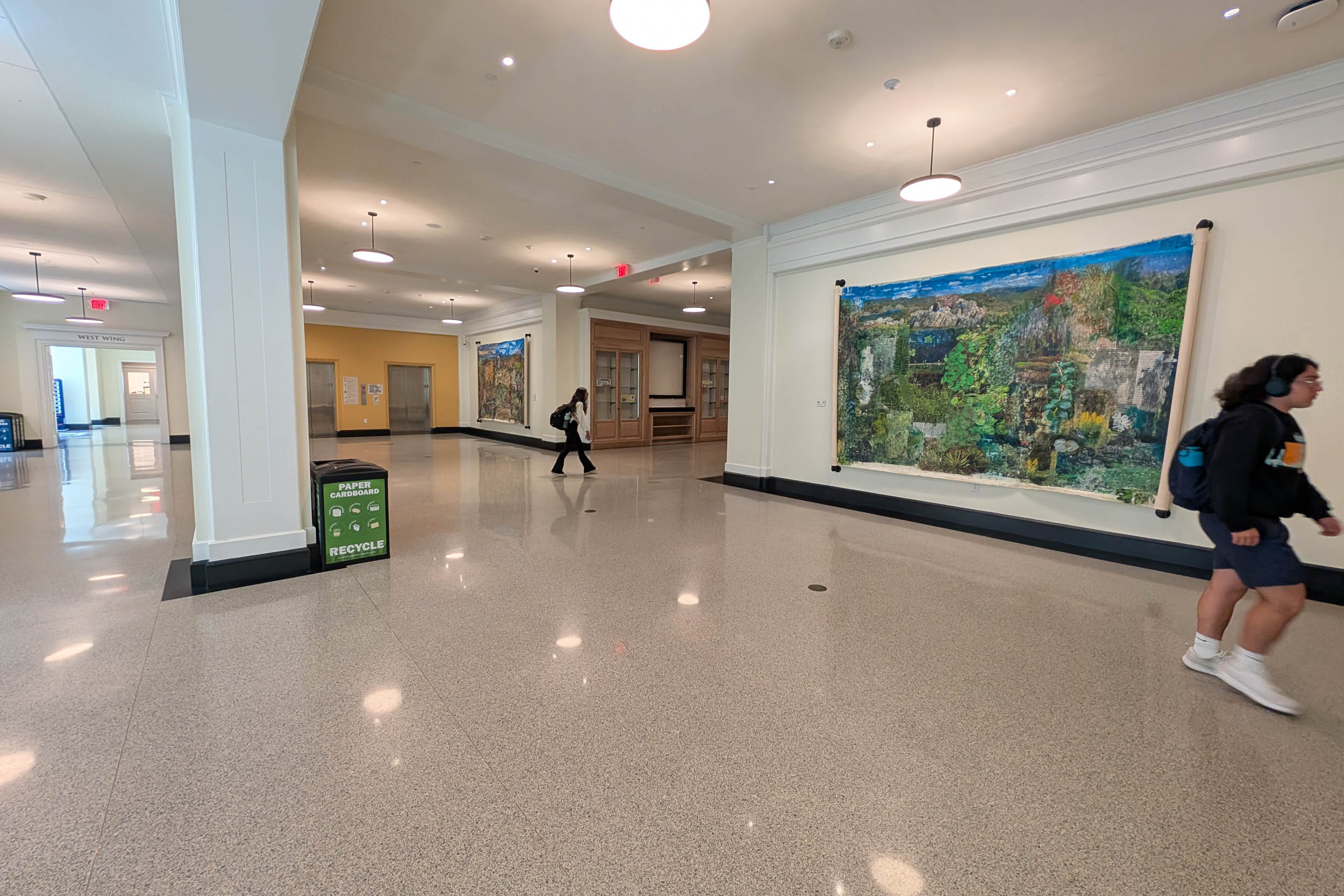
As on each floor, we’ll start in the central area between the elevators and the central stairs. Along with the fourth floor, the second floor is one of the busiest in Shannon Library, with entry and exit points from the building, as well as a passage to Clemons Library. The central area here acts as a convening point with direct access to the study rooms in the east wing, the Study Courts to the south, the north entrance, café, and study room to the north, and the connector to Clemons Library in the west wing.
Extra credit
In the central area you’ll notice an art installation. Art changes yearly here — the current art is “Free to Be, a Collective Virginia Landscape,” consisting of two massive, mixed-media collages of photographs, gouache and watercolor paints, and colored pencils, the work of Assistant Professor of Art Maria Villanueva. Art here and throughout the building is part of the Art in Library Spaces program, which is committed to upholding the Library’s values through creating inclusive artistic spaces that strengthen a sense of belonging for all individuals at the University of Virginia and in the Charlottesville community.
Next stop
From the central area, head towards the south wing and into the Study Courts.
Stop 2: Study Courts

On either side of the bridge leading to the south wing are the second floor Study Courts, double-height rooms enclosed by skylights. The Study Courts are outfitted with a variety of tables and seating options and are another alternative to Shannon’s various study rooms for a place to relax, read, and/or study with abundant natural lighting.
The west Study Court (along with some classrooms, conference rooms, and the third floor Seminar Room) is among a dozen spaces in the building features a hearing loop, a system for those wearing hearing aids that eliminates background noise and amplifies sound.
Extra credit
The Study Courts were originally light courts in the center of the building which were designed to allow light and ventilation into the building, down to the former first floor. However, prior to the early 2020s renovation, the floor of the light courts was open to the elements and inaccessible. Thanks to the philanthropy of Marjorie Harrison Webb, Marjorie Webb Childress, and the Harrison Family Foundation, a new floor was created here on the second level and covered by skylights to create the two Study Courts.
Next stop
Using the bridge passageway between the Study Courts, head into the south wing. Directly in front of will be the Special Collections Conservation Lab.
Stop 3: Special Collections Conservation Lab
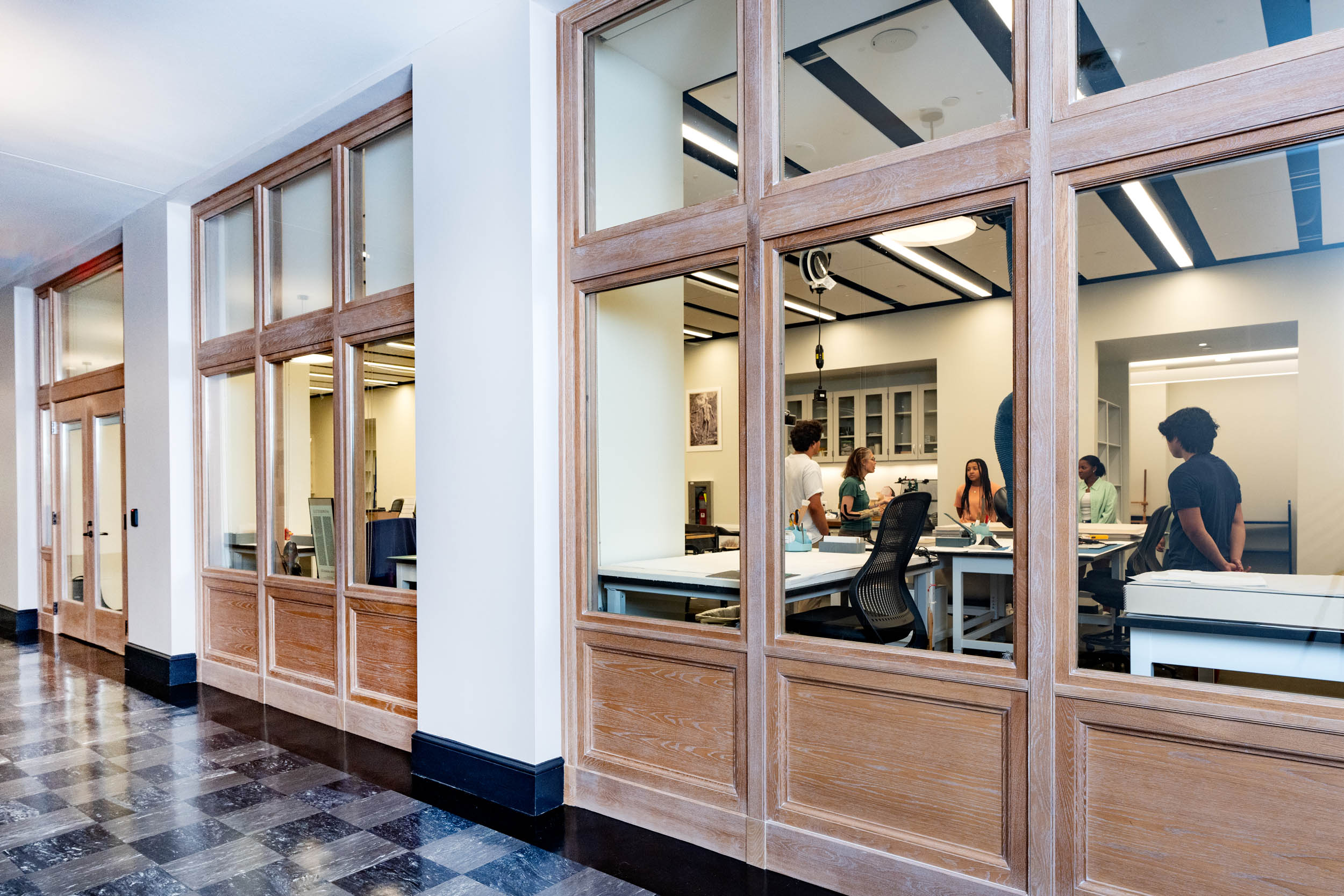
Through the windows here is the Special Collections Conservation Lab, for working on the conservation of the UVA Library’s rare materials. There’s also a Collections Conservation Lab around the corner in the west wing, where Library staff work on maintaining and preserving materials from the circulating collections. Between the two labs is the connector to Clemons Library, an interior passage which allows materials and people to move between the two buildings.
The labs contain specialized equipment such as board shears, book presses, freezers, and fume hoods. Both labs are fronted by windows so visitors can see conservators at work. Conservators may sometimes draw shades over the lab windows in they are working on particularly sensitive materials.
Extra credit
In addition to the two large conservation labs there are spaces for audiovisual (AV) reformatting and AV and Digital Preservation. The Library’s Preservation Services team does the in-house work of maintaining the physical integrity of Library collections regardless of format, as well as preserving and ensuring access to digitized and born-digital content. The work of the team includes binding, creating custom enclosures, disaster recovery activities, mending and book repair, stabilization and conservation treatment, VHS cleaning and digitization, reformatting obsolete/born digital media for instructional use, motion picture repair, web archiving, and more.
Next stop
Explore the passageway to Clemons and check out the west wing if you like. When you’re ready to move on, head left from the Special Collections Conservation Lab to the McGregor Room in the east wing. Note: Be sure to keep noise levels to a minimum here — the McGregor Room and Weinstein Room are quiet study spaces.
Stop 4: McGregor Room
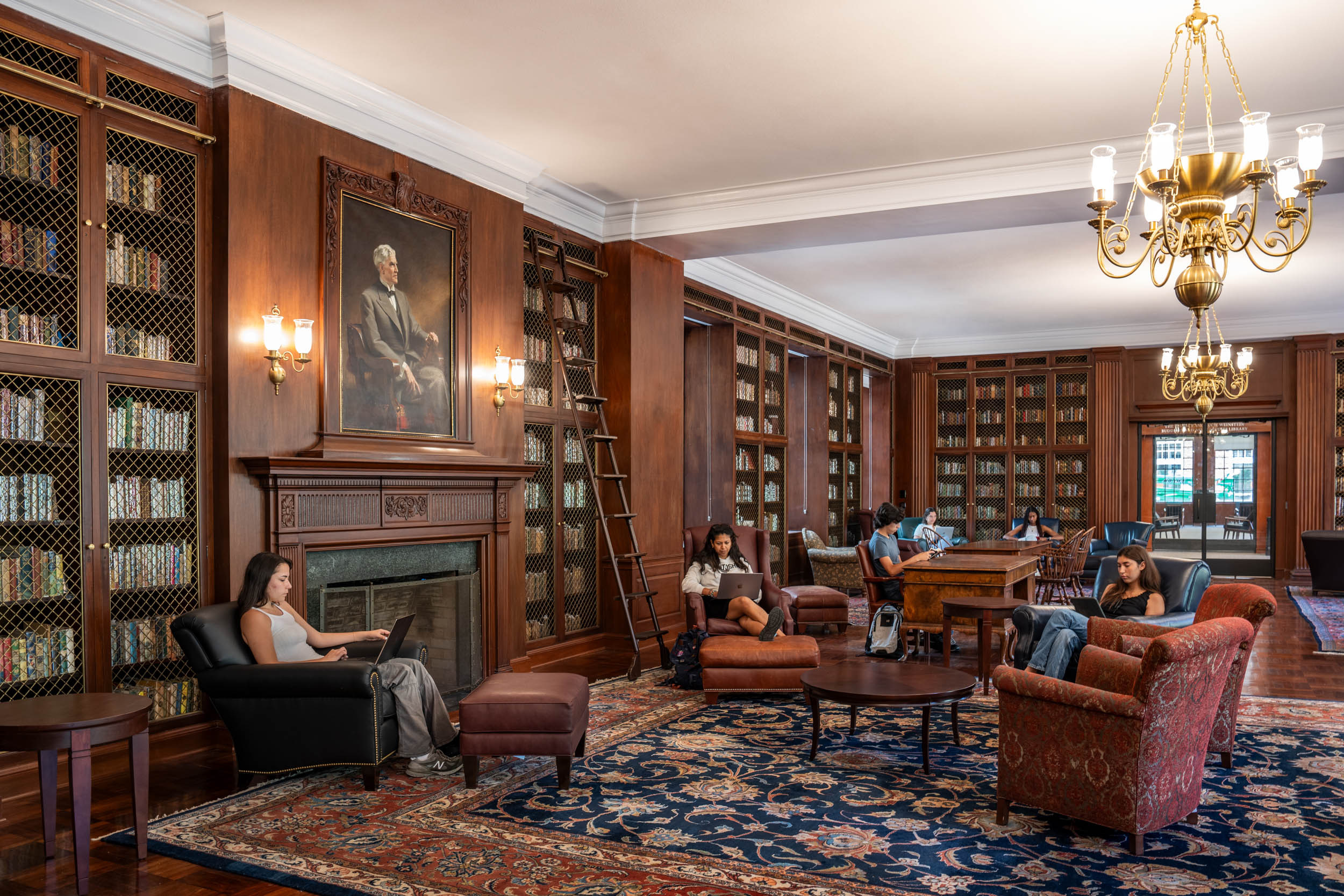
The McGregor Room has an interesting history. Tracy W. McGregor and his wife Katherine Whitney McGregor were Detroit philanthropists, and Tracy McGregor (that’s his portrait above the fireplace) was an avid book collector. He died in 1936, while this library was being built, and the trustees of the McGregor Fund chose UVA to receive his collection. So, the McGregor Room was created initially to house the Tracy W. McGregor Library of American History, one of the cornerstones of UVA Library’s special collections and a gift that helped to establish it as a major research library.
For many years afterwards, the room served as the home of UVA’s rare books and manuscripts (there is still a vault on the room’s south end), but when the Albert and Shirley Small Special Collections Library was opened in 2004, the McGregor Library, along with the other rare materials, moved to that building, and the McGregor Room was outfitted as a reading room. It remains a very popular room for quiet reading and study, often referred to by recent generations of students as “The Harry Potter Room.”
Extra credit
Above the north doorway is a relief carving showing a ship and a school of fish. This is a representation of the Tracy W. McGregor bookplate. The image is taken from a map included in John Smith’s “The Generall Historie of Virginia, New England, and the Summer Isles...” (1624), one of the original volumes of the McGregor Library. The bookplate was drawn by the portraitist Hattie E. Burdette and was engraved by A. N. MacDonald. The fish are cod, symbolizing the abundance and prosperity to be found in the New World. The ship is the caravel Godspeed, one of the three vessels carrying colonists to Jamestown in 1607, and represents McGregor's interest in American history.
Next stop
Head out of the McGregor Room, through the small antechamber (known as the Lamsam Room) and into the Weinstein Room.
Stop 5: Weinstein Room
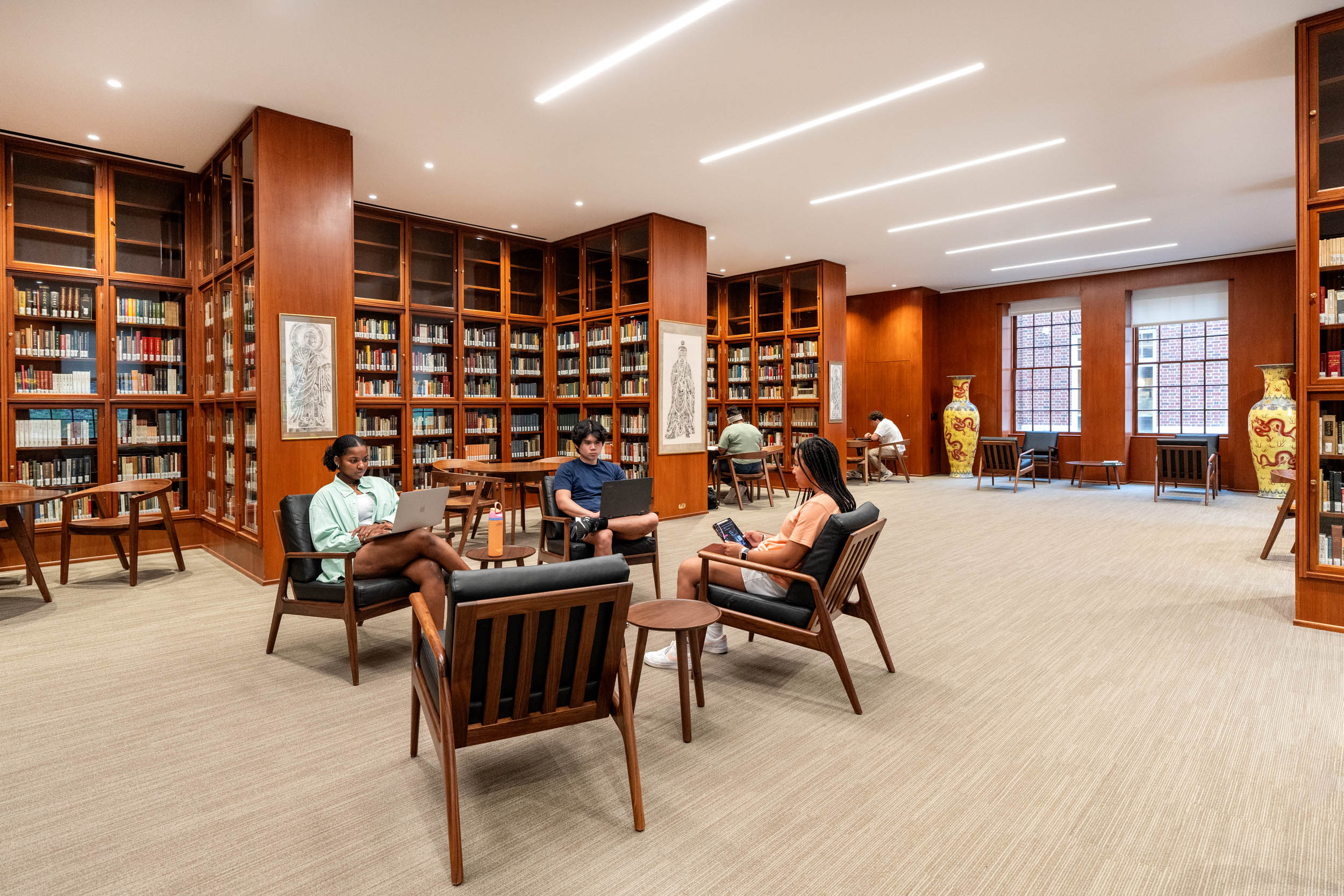
Originally a room that housed manuscripts, the Weinstein Room was first named the Barret Room and then the Asian Studies Room. In 2019 this elegant space was refurbished and dedicated to house the Stanley and Lucie Weinstein Buddhist and Asian Studies Library. A bequest from the Weinsteins of nearly 11,000 volumes made the UVA Library one of the major holders of Buddhist materials in the country. Some of those volumes are now in the Small Special Collections Library but most are held in this room and are available for circulation.
Extra credit
The large vases flanking the windows in the Weinstein Room are from the University’s Fine and Decorative Arts Collection, a 500,000-object collection which includes everything from 19th-century portraits to decorative vases to archaeological artifacts associated with the history of the University. One subset of the collection are the legacy archaeological artifacts excavated at the Flowerdew Hundred on the James River, at various times the site of Native American villages, a frontier settlement, a plantation, and a Civil War encampment. The Flowerdew Hundred Collection is housed in the basement of Shannon Library and is open to students, researchers, and visitors by appointment.
Next stop
Leave the Weinstein Room, turn left, and head back into the central area. From there, turn right into the hallway flanked with display cases on either side.
Stop 6: Rare Book School
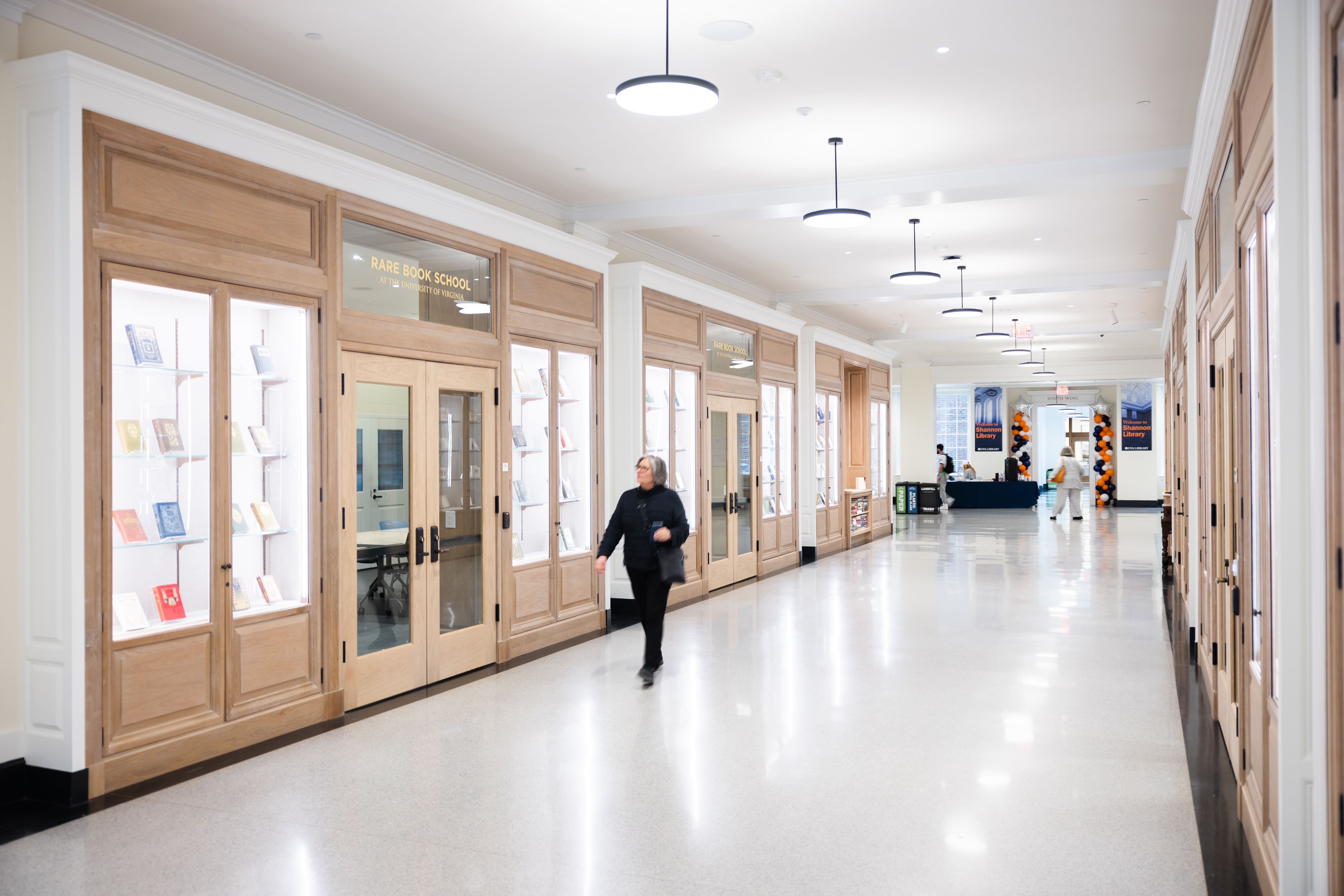
On either side of the hallway here are the offices, workspaces, and seminar rooms of Rare Book School. Rare Book School is the preeminent institution for students from all disciplines and skill levels to study the history of written, printed, and digital materials with leading scholars and professionals in the field. Instruction in bibliography, book history, manuscripts, typography, illustration, bookbinding, collection management, curatorship, archives, and related subjects are offered, mostly through five-day intensive courses held during the summer here in Shannon Library, but also throughout the year with partnering institutions across the country, internationally, and online. RBS also holds lectures and other events and maintains rotating exhibitions/displays in the cases here.
Extra credit
On either side of the north end of this hallway are rows of card catalog drawer faces, a nod to the building’s past. These were repurposed from card catalogs in the original building to create a wall listing contributors to the 2020s renovation project, and/or those whom donors chose to give in honor or in memory of. The actual cards from the catalogs were preserved and remain in the Library’s collections. In addition to this donor wall, you may also see other donor plaques throughout the building on tables, study carrels, benches, and some named spaces.
Next stop
Head to the Z Society Reading Room at the north end of the hallway.
Stop 7: Z Society Reading Room
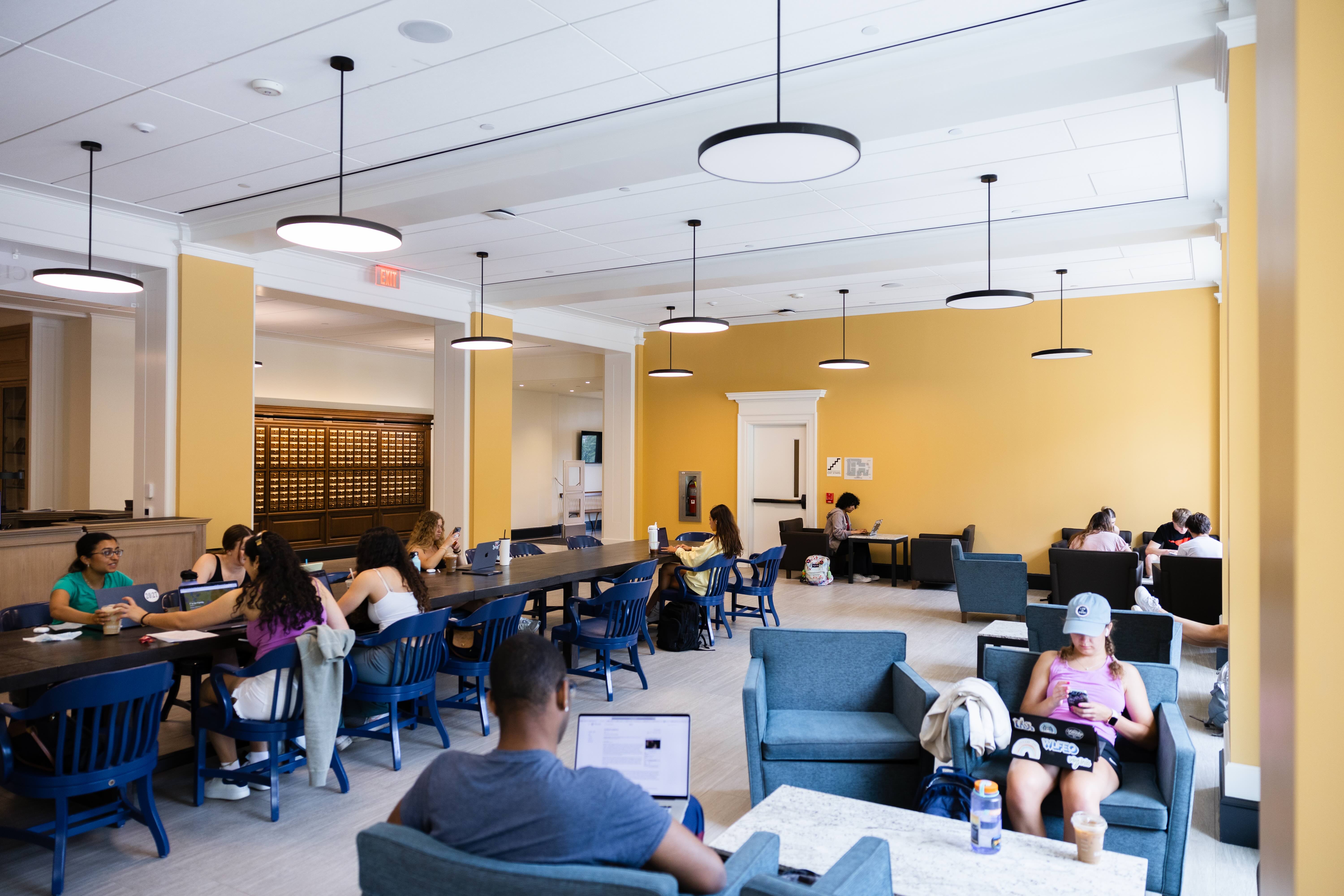
The large reading room here is sponsored by UVA’s Z Society, and provides easy access to the north entrance/exit, and interior stairs and elevators. Nearby is the Cav Commons café space, sponsored by the UVA Parents Fund. Just outside of the room is a Service & Information Desk where visitors can check in and return materials, and/or get help with any questions they may have.
Extra credit
Just outside the Z Society Reading Room is extensive terrace space, and a welcoming north entrance facing outwards from UVA. Like other libraries in the University Library system, Shannon Library is a public library. Community members are welcome, and Virginia residents 16 years of age or older can register for a community borrowers card and check out materials.
Next stop
Feel free to explore the terrace space and/or the rest of the second floor. When you’re ready to tour another floor, make your way back to the central area (stop 1 on the map). From the central area, use the central stairs or elevators to go up to whichever floor you’d like to visit next. On that floor, we’ll also begin in the central area between the central stairs and elevators.
If you are done with the tour, feel free to continue to explore Shannon Library and take advantage of the building’s spaces, services, and resources. To leave, you can exit Shannon Library on either the second or fourth floor.
